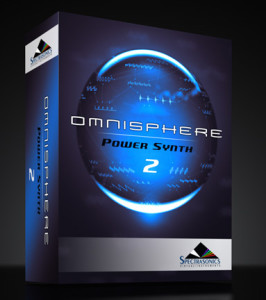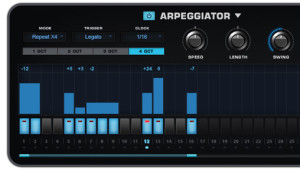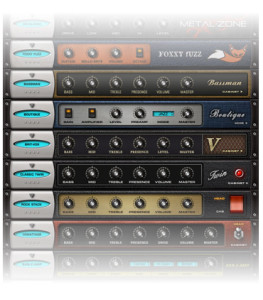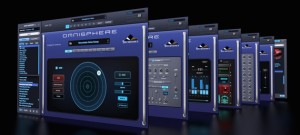New Gear Review: Spectrasonics Omnisphere V2
When the first version of Omnisphere was released in 2008, the world of software synthesis was in a very different stage of development.
The critical mass of users who favored software instruments had yet to crest, and very few musicians would publicly bet their reputations on the sound quality of an instrument existing wholly inside their CPU. But Eric Persing, founder of Spectrasonics, and chief sound designer for Roland for over 20 years saw a world of potential in using computers to mold and shape sounds.
Persing’s original “Omnisphere” was quickly adopted by a number of producers and composers, it’s huge range of sampled sounds finding their way into film and video game scores, electronic music productions, and the instrument was eventually awarded the prize for best software instrument at 2009’s Musikmesse Awards.
Fast forward to 2015 and every producer with a laptop and a dream has a folder of VST instruments, some of which they’ve probably never even opened. With the exponential increase in computing power and speed, software instruments offer even greater possibilities for creative use and Omnisphere V2, released this past April, certainly makes use of those extra gigs of RAM. This software instrument comes bundled with eight CDs worth of content and the installation takes several hours. But when loading Omnisphere for the first time, you quickly realize why.
Features
If I could think of one word to describe Omni, it would be “HUGE.” Gigantic. Massive. (umm, no, not that Massive).
Omnisphere comes bundled with over 12,000 sounds, more than 4,500 of which are brand new to V2. I can confidently say that if you can dream up a sound, Omnisphere has it.
Presets are built from either recorded samples (many of which were recorded from Italian sound designer Diego Stocco’s famed custom-built instruments) or one of 400 new DSP-generated waveforms. Both options offer such a plethora of ways to modulate and mangle the source that this distinction is almost irrelevant.
While V1’s wide-ranging library of acoustic sounds made it particularly suitable to scoring work, V2 has bolstered its quantity of electronic instruments, and includes a new audio import feature, giving users the ability to use Omnisphere’s modulation routing, arpeggiators, and multitude of effect units on their own sounds.
There is such a wide range of features that mentioning all of them would be tedious, but several deserve special notice:
There are 25 new effects units, expanding Omnisphere’s collection to a stunning 58, all of which can be modulated as well. FM, Granular, and Ring mod effects have been updated and improved, giving an even wider palette with which to play.
The “Orb”, carried over from the first version of Omnisphere, allows for “infinitely shifting variations,” and can be adjusted from an included iOS app called TR Omni.
Simply sorting through Omnisphere’s collection of presets is a huge task in and of itself, and Spectrasonics has listened to users’ requests from V1, adding two new features that make it much quicker to find an appropriate sound:
“Sound Lock” lets the user select characteristics of the current preset that they want to keep while browsing through other patches. This means that your modulation settings and filter choices can remain intact while auditioning new sounds. On the flip side of this coin, “Sound Match” finds presets that are similar in timbre to your current preset, allowing you to quickly come up with a range of sounds in a tonal palette.
While these two features did vastly reduce the amount of time spent scrolling and trying to decipher the titles of presets, I found myself wishing some of them were named in a more straightforward manner, especially when using a computer that leaves something to be desired in terms of CPU speed. Another caveat is that hitting the down arrow while the mini-browser is open will move to the next preset without saving your current patch! Fortunately, this behavior can be deactivated by from the settings menu.
In Use
The multi-window approach that Omnisphere takes with its GUI is both a blessing and a curse.
Having separate windows for deeper programming functions keeps the main windows uncluttered and allows fonts to be easily legible, but it also means that some important functions may remain hidden until you’ve opened the appropriate window— something that novice users will have to adjust to.
A minor quibble I personally had with this design choice is that it’s impossible to see your filter and amp envelopes at the same time This is something that other users coming from the world of analog synthesis may find slightly frustrating as well.
There were a few functions, such as the volume and pan settings of individual layers, that can be adjusted from several different panels. While theoretically helpful, I found this made making changes to those parameters a bit clumsy and harder to keep track of. I also found myself wishing that I could use key commands to move around the windows, as there’s a fair amount of clicking involved when delving deep into the instrument’s feature set. These are minor grievances however, and overall, I was able to adjust to Omnisphere’s workflow fairly quickly.
All of this deep functionality would be for naught if Omnisphere didn’t sound like one of the most impressive and versatile instruments I’ve ever used, virtual or not. It’s actually hard to believe that some of these sounds are originating from DSP waveforms: Deep, subby bass, continuously-morphing atmospheric sweeps, and and all manner of crunch and fluid distortion are possible just by twisting a few knobs.
It’s not an exaggeration to say there are worlds inside this instrument, and it would be possible to create an entire rock opera, cinematic score, or techno masterpiece using only the sounds within Omnisphere. If you’re looking for the best software instrument around, look no further and prepare to dive in.
Leo Maymind is a musician and writer who lives in Brooklyn.
Please note: When you buy products through links on this page, we may earn an affiliate commission.










